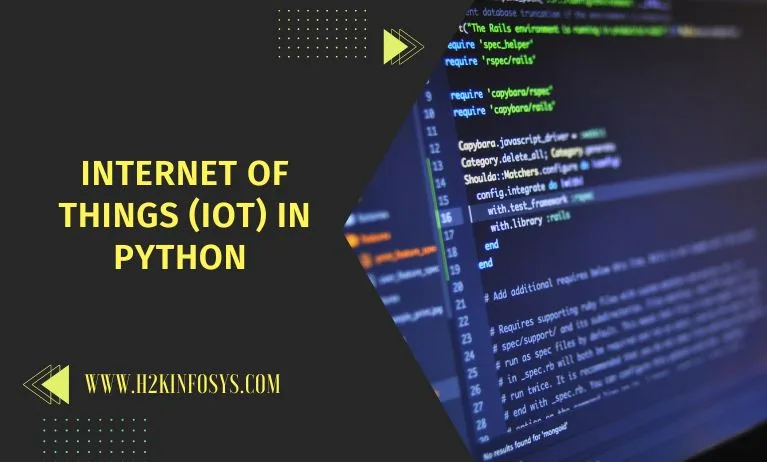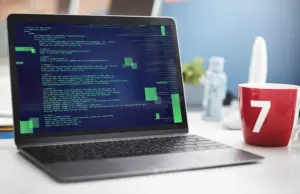The Internet of Things (IoT) is transforming how objects and gadgets communicate with one another. Additionally, you’ll be able to create interactive items and design them once you have IoT with Python on your side.
Connections are the key to the Internet of Things, which means linking your electronics project, product, or design to the rest of the world. We begin with the presumption that you want to link a “Thing” to the “Internet of.”
How do you go about that? Typically, you begin with a goal for improvement. Let’s say you enjoy fish and have an aquarium in your home or place of education. You have some extremely beautiful fish, and they require water that is kept between 20 and 30 degrees Celsius. Although you could always check the water’s temperature, a microcontroller would be more helpful.

You could begin with a basic temperature management, but one that could email or text you to let you know if something went wrong and perhaps the heater broke would be preferable. Making objects smarter is the main goal of the Internet of Things.
One of the most well-liked and adaptable programming languages is Python. Python may be used to build cross-platform desktop programs as well as web, mobile, and scientific software. Python allows you to work with vast volumes of data and create the intricate algorithms that are common in Big Data settings. There are several Python packages available that let you apply Python’s features to any type of domain you can think of. Check out the online Python course to learn more about Python and how it applies to IoT.
The best language for IoT
The most suitable programming language for Internet of Things (IoT) devices is Python. A snake, you might say? Close! Beginners and experts alike use the Python programming language, which has experienced the fastest growth. IoT is an excellent application for Python for several reasons.
Data receiving and sending are the foundation of IoT. Perhaps you’d like your aquarium to alert you if the temperature becomes too high or low.
When you include the Internet, email, mobile devices, and text messages to extend the reach of your programming beyond your screen, even basic examples become extremely powerful.
You can use our existing Python and all of its package knowledge to code the various components of our IoT ecosystem. You can make use of Python’s beloved object-oriented features. interacting with the Intel Galileo Gen 2 board and the various devices linked to it through code. The various packages that enable us to quickly run a Web server and offer a RESTful API can be used. To communicate with databases, Web services, and various APIs, we can use all the packages that we are currently familiar with. You can easily enter the IoT world thanks to Python.
Why Python and IoT?
Why is Python such a wonderful language for the Internet of Things? Naturally, its popularity and availability on all systems come first. It’s also particularly good at parsing text, especially the “structured data in text”—often referred to as HTML, XML, or JSON—that powers the Internet. Other languages could be quicker in some aspects, but they frequently have trouble handling regular expressions, text parsing, or switching between data formats.
Pointers and memory are not a concern because Python supports flexible memory management. Speed will suffer as a result, but it will help prevent some of the grossest security issues that beset IoT devices. You definitely don’t want your smart aquarium to inadvertently become a botnet!
In addition, Python offers exception handling, which, in comparison to certain other languages, is a “proper” technique to handle mistakes. You may experience intermittent connections (such as “the WiFi is down!”) or unexpected data transmissions whenever you make your devices accessible to the Internet. Due to exceptions, your program will more likely pause than continue carelessly with flawed instructions even if you are a little lazy and fail to check a value or function output.

Naturally, Python includes everything you could possibly need, making it easier than ever to get started. Python is available on desktop and laptop computers as well as embedded devices like the Raspberry Pi and microcontrollers under the name CircuitPython.
Learning CircuitPython is an excellent tool for creating web-connected objects and for collaborating and exchanging ideas with people all over the world.
Conclusion
Internet of Things and Python are two terms that go well together in the IT world. You can learn more about Python and IoT by checking out the Python certification course.































One Response